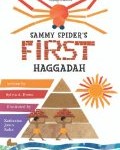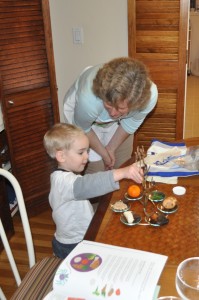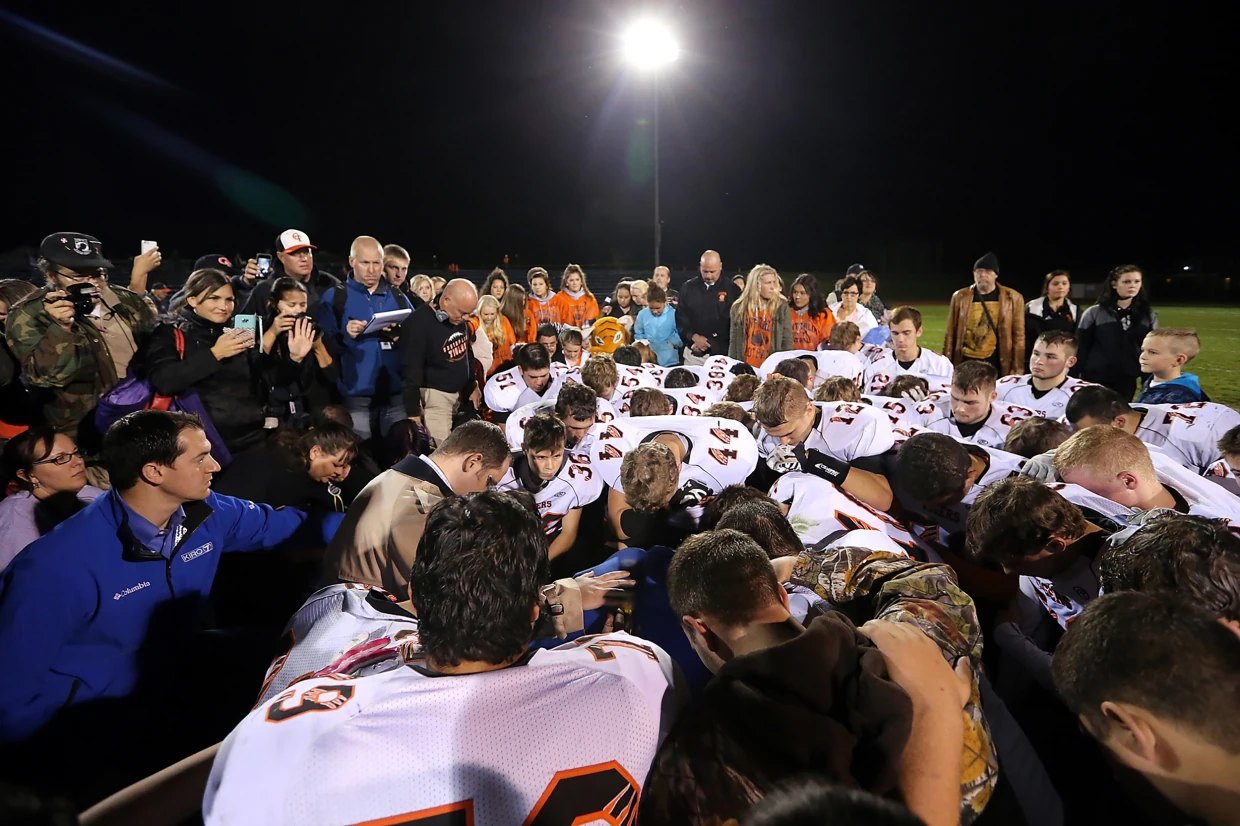April 26, 2011
My childhood memories of Passover are fleeting. My parents, my brothers, and I celebrated two-minute seders. Eat matzo. Four questions. Hide, find afikomen. Done. Thanksgiving, not Passover, was the holiday I remembered best. That was the day that brought us together.
Now, I’m a Mom and more connected to my Jewish faith than I ever was in childhood. I want Passover to be a holiday my son remembers and treasures. Passover will trump Thanksgiving. I learned something important this Passover. Set low expectations when it comes to a seder and a toddler.
My husband and I hosted a seder on the first night of Passover for our little family of three, my parents, and a Chinese classmate in my husband’s MBA program. The student was curious about Jewish holidays. I warned him that our seder would be heavily simplified. Our son, Simon, is 3. We would eschew an adult haggadah in favor of a truncated, child-friendly one, Sammy Spider’s First Haggadah by children’s author Sylvia Rouss. We would cover the story of the Jews’ exodus from Egypt in rhyme, song, and pictures.
The festivities began before we sat at the table. Simon helped place each item on our seder plate.
He was almost giddy with excitement as he gingerly put the roasted egg on a tiny dish, then did the same with the other items meant to symbolize the Jews’ slavery and ultimate flight to freedom. So far so good. My son was engaged. We started the seder, and Simon sang with us as we blessed the candles and wine. Then he leaped out of his chair when my husband broke a matzo piece in half to prepare the afikomen, which gets hidden for children to find after dinner.
“No, Simon,” my husband said with a smile. “I hide it, not you.”
Normally, several more pages would follow, but on behalf of toddlers’ short attention spans, the Sammy Spider haggadah reaches the Four Questions next. My husband started off singing the Four Questions. I expected Simon, as he had done so many times in previous weeks, to chime in. Simon sang the first few words, then stuck his thumb in his mouth. I joined in with my husband, and we sang the four questions. Shortly afterward, Simon refused to sit at the table. He wanted to play, and he wanted us to play with him rather than continue reading. He began crying and flailing on the floor at our feet.
We ignored his request to play, but got him some milk, figuring the meltdown might be related to hunger. He returned to the table, and sat in my lap, rubbing my ear and sucking his thumb as we returned to the Passover story. We used the sing-song style of the Sammy Spider haggadah, which begins the story like this: “A long time ago a cruel Pharaoh ruled Egypt. He made the Jewish people slaves and forced them to build cities and palaces for him.” Then, all of us chanted, “Working, working in the desert sun, working, working, our job is never done.” Simon soon began nodding in time with the chant, then tried to chime in on the chorus parts. Phew. He was in the Passover mood again.
In her Sammy Spider haggadah, Rouss writes a song about the plagues called Things are Bad in Egypt to the tune of “If You’re Happy and You Know It.” I urged Simon to stand with me as we sang about frogs jumping everywhere and said, “jumpity-jump.” Simon jumped with me, itched his hair for the lice plague, and blinked his eyes because of the plague of darkness. He was giggling. More importantly, he was participating.
Simon hit his stride after we ate dinner and let him find the afikomen. He quickly found it, then the young voice so silent on the Four Questions, sang lustily on “Dayenu,” the song we sing to say that as Jews we had had enough of slavery in Egypt. We ended the seder with a song called One Kid, based on the folk piece, Chad Gadya, typically sung at the end of seders. Following what I learned at a temple workshop for families, I gave parts to everyone, including Simon, for the song about that little goat a father bought for two zuzim. Then came the dog, “woof!”, that bit the cat, “meow,” that ate the kid, “baa-aaa.” You get the idea.
Simon laughed and sang and barked along as we turned our dining room into a barn yard. “Again,” he said. We did it once more.
It was not exactly the seder I envisioned. My son’s sweet, high voice did not ring out on the four questions. But his voice was heard. What he remembers best from this Passover may be his parents, grandparents, and a visitor from China meowing and barking. I’m okay with that. It at least gave him a Passover to remember.








Linda, this sounds like the best seder ever with a toddler! I remember several years where we kept having our big friends0and-family seder but I spent the latter half of it upstairs putting Becca to bed. And I figure — it took ten plagues for Moses to really get Pharoah’s attention, and he was a grown man! You got your son’s attention with some songs and hands-on activity and not even a single real locust.
It was definitely an enjoyable seder despite the mini-meltdown. I give credit to my temple for giving me so many ideas for creating a kid-friendly seder. Our cantor taught families the One Kid song at a family pre-Passover event and taught it again during our temple’s Yom Shabbat weekend about Passover.
We did have these little plastic flip frogs. Those may have been a bigger hit with Grandma than my little guy. His favorite hands-on activity was breaking his piece of matzo into little bits.
Sounds like you had an enjoyable Seder. I remember running the Seder with my father who went on that journey from which there is no return about 16 months ago. We had a Seder this year at my sister’s place. It went well but it wasn’t quite the same. I remember Thanksgivings when everyone would play touch football before the meal. Let me know (if you are so inclined) what you think of my last two Shabbes poems.
Peace & Blessings
Matthew Anish
Pingback: Toddler Teaches Passover Lesson: Set Low Expectations | Tiferet Journal
Pingback: Toddler Teaches Passover Lesson: Set Low Expectations | Tiferet Journal